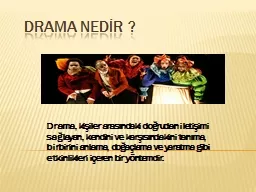PPT-ELEMENTS OF DRAMA Drama The word
Author : cheryl-pisano | Published Date : 2018-10-05
drama comes from the Greek verb dran which means to do The DoingActing is what makes drama The earliest known plays Were written around the fifth century BC
Presentation Embed Code
Download Presentation
Download Presentation The PPT/PDF document "ELEMENTS OF DRAMA Drama The word" is the property of its rightful owner. Permission is granted to download and print the materials on this website for personal, non-commercial use only, and to display it on your personal computer provided you do not modify the materials and that you retain all copyright notices contained in the materials. By downloading content from our website, you accept the terms of this agreement.
ELEMENTS OF DRAMA Drama The word: Transcript
drama comes from the Greek verb dran which means to do The DoingActing is what makes drama The earliest known plays Were written around the fifth century BC Produced for festivals to honor Dionysus the god of wine and fertility. A drama is a story acted on stage for an audience.. Dramatic Elements. Dramatic elements are needed to bring a story to life on stage:. setting script speech character. props non-verbal actions conflict . AP English Lit. & Comp.. Drama. Drama is a performed art.. It comes to exist only through performance on a stage. If it is not performed it is simply fiction.. Drama is a visual form.. Drama can exist without words, but it cannot exist without actors in motion, actors intending to be seen.. What are the major differences. between drama and prose stories?. CCS-5-RL-5. . Explain major differences between drama and prose stories, and refer to the structural elements of drama (e.g. cast of characters, setting descriptions, dialogue, stage directions, acts, scenes) when writing or speaking about specific works of dramatic literature. Before the Spanish period, the early forms of the Philippine drama were the . duplo. and the . karagatan. .. . *. Duplo. – was a poetical debate held by trained men and women in the ninth night, the last night of the mourning period for the dead. . After . the fall of the Roman Empire . in c.476 . AD, came a period known . as . the “DARK AGES”.. . The Church was the only stable “government”.. During the Medieval period:. The . Christian Church . Tragedy . It is a . serious. work of Drama that presents the . downfall. of its . protagonist. / . hero. (person better than ourselves) who through . some error in judgment. , . weakness of character. The Elements of Drama. The elements of drama are the features that give drama unique shape and form:. Role. and . character. are directed by . focus. driven by . tension. , made explicit in . time, place. Welcome from Kat and Shaffer!. Who are we?. Kat Shondeck. 7. th. year with MNMS Drama club. Over 35 years as a performer/director/choreographer/producer. Works at PSU. Lives in Boalsburg with husband, Mike and 5. Ice-Breaker. Take a look at the film script for . The . Monsters . A. re Due on Maple Street. .. Steve. What was that? A meteor? . Don. . [. Nods. ] That's what it looked like. I didn't hear any crash, though, did you? . duplo. and the . karagatan. .. . *. Duplo. – was a poetical debate held by trained men and women in the ninth night, the last night of the mourning period for the dead. . . Bellacos. – male participants, they are the heads of the games. . La gamme de thé MORPHEE vise toute générations recherchant le sommeil paisible tant désiré et non procuré par tout types de médicaments. Essentiellement composé de feuille de morphine, ce thé vous assurera d’un rétablissement digne d’un voyage sur . What are the major differences. between drama and prose stories?. CCS-4-RL-5. . Explain major differences between drama and prose stories, and refer to the structural elements of drama (e.g. cast of characters, setting descriptions, dialogue, stage directions. “DRAMA” Types of Drama Tragedy: [solemn, personal, religious & Social Issues] Tragic Flaw & Catharsis Types of Drama Tragedy:[solemn, personal, religious & Social Issues] - Tragic Flaw & Catharsis DRAMA NEDİR ? Drama, kişiler arasındaki doğrudan iletişimi sağlayan, kendini ve karşısındakini tanıma, birbirini anlama, doğaçlama ve yaratma gibi etkinlikleri içeren bir yöntemdir . Drama tiyatro tekniklerinden yararlanılır ancak drama tiyatro demek değildir. Drama bir grup etkinliğidir. Seyirci ve oyuncu ayrımı yoktur. Bütün grubun katılımı ile anında oluşturmadır. Belli bir metni yoktur ve önceden prova yapmayı gerektirmez. Dekor kostüm ve aksesuar zorunluluğu yoktur. Grup dinamiğine dayalı oyunlaştırmadır. Anında oluşturmayı, yaratmayı içerdiği için yaratıcı drama olarak ta kaynaklarda yer almaktadır.
Download Document
Here is the link to download the presentation.
"ELEMENTS OF DRAMA Drama The word"The content belongs to its owner. You may download and print it for personal use, without modification, and keep all copyright notices. By downloading, you agree to these terms.
Related Documents

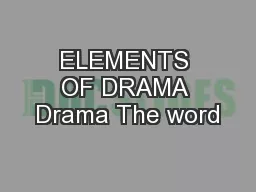

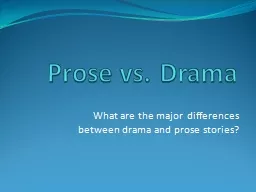
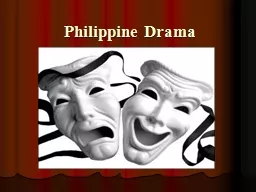

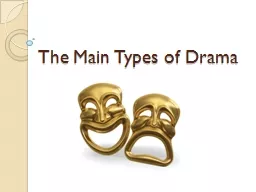
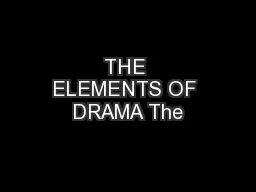

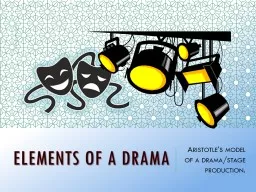
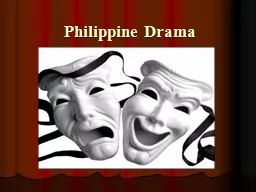

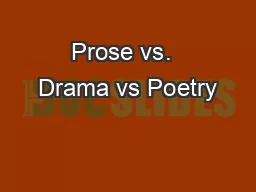
![“DRAMA” Types of Drama Tragedy: [solemn, personal, religious & Social Issues]](https://thumbs.docslides.com/762817/drama-types-of-drama-tragedy-solemn-personal-religious-amp-social-issues.jpg)
